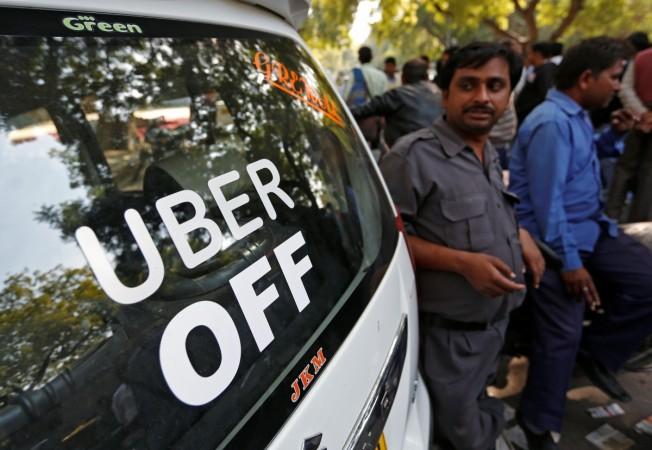
In ever more cities, smartphones have been reshaping the cab market, bringing into taxi interiors a hitherto hidden customer base which was for decades disgusted with the unregulated (and often, unmetered) autorickshaws with their doctored fare meters, rude drivers and uber expensive taxi rides.
And, down the years, business travellers all but abandoned taxis, while concierge services mushroomed in Tier 2 and 3 cities. The entry of app-based aggregators disrupted the conventional autorickshaw and taxi markets, even forcing automotive OEMs to revise their growth and marketing strategies to take on the emerging niches.
Global companies like the growingly controversial Uber and Ola had chosen app-based hailing systems by signing up cab drivers in a hurry. The hunt has been very contentious and competitive all at once -- powerful drivers unions in Uber, Ola and lesser known, but by no means formidable hyperlocal services like Fast Track, UTOO and Cellcabs, have oftentimes called the shots when recruiting new cabbies into the app-based taxi aggregator's fold. The entry of self-driven rental car services like Zoomcar and Voler and ride-sharing services like Ryde and Bla Bla Car intensified the competition to deliver smart, quick and reliable service.
A ICRA report says that the Indian passenger vehicle industry is likely to ride on the strong growth potential of the domestic taxi segment in the near term, whereas medium to long term growth will be supported by low car penetration levels and rising incomes. Whether this potential shall be fully realised is always a matter of debate between business sense and street reality.
e-hailing power
But the economic benefits began to sink in soon enough. Cabbies, who had taken their vehicles on hefty loans, testified to their abilities to repay their loans and still have savings in hand; for, they could be alerted to "blips" in demand during various periods of the day, depending on whether a political party was holding rallies, or a cinema hall emptying out prospective passengers into the street who would look for cabs to hail. Through the drivers app, new ideas could be tested, while the passenger app had provisions to hold erring or dithering drivers to account if the ride did not go ahead as planned.
The first signs of trouble came in the form of Ola's surge pricing, which made the base price of every ride unaffordable for many passengers. Ola generates around 1.3 million rides per day with a 65 percent market share in India, followed by Uber with 650,000-800,000 rides bringing up the rear with 35 percent. The ingenious surge price idea of the cab aggregators shadowed the surge pricing model popular with airlines. The app aggregators simply charged higher when demand was at its peak and work is easy to find on the street.
For quite a while, it had been clear that Ola and Uber could not sustain themselves at pricing models featuring low base fares of Rs 50-70 or thereabouts. Surge pricing was anticipated to maximise margins for the companies and their drivers without compromising on passenger imperatives to reach their destinations without hassle on a first-come-first-served basis. Yet, this outcome was not always materialised with the expected precision or professional support from app-based aggregators.

These very passenger imperatives led to huge protests against the system, for taxis simply did not happen to enjoy the privilege and speed factor which the airlines considered their preserves. Negative public sentiment soon rubbed off on the unions who threw up a phalanx of operational issues facing cabbies in their ranks – unrealistic number of trips, often as many as 19 a day (reduced since to 10-14 trips on an average), low commissions and margins and badly functioning apps.
Ola's surge pricing program christened as BOOST -- which pointed drivers to areas where surge pricing is available -- took the brunt of driver ire, for high fuel costs toted up while driving to BOOST locations and Ola's commissions in the range of 30 percent charged from drivers simply did not add up to the bottomline of many who had bought their cars on hefty loans and had huge EMIs to pay on them.
Demand side complaints on the apps being technology and utilitarian disasters for customers continued to pour in at the offices of Ola and Uber. Not that Ola and Uber took notice, busy as they were in erecting wall after wall of facile defence against public and cabbie vitriol. Executives at both companies blamed the mess created by their own middle managements on driver "laziness", stupidity, unprofessionalism, unionism, greed, among a host of adjectives, not altogether printable.
Where are the drivers going?
While the demand-supply gap in the cab industry has for the last few years rapidly eaten away at the profits of Ola and Uber, it has not stemmed the rise of new competition. But how many drivers will stay on online platforms to zoom in on customers "e-hailing" them? Faith in the app-based system has been rapidly eroding even among drivers who, just a year ago, were claiming to be making Rs 45,000-52,000 a month, after paying taxi companies their commission and accounting for fuel and maintenance charges.
The growing trend of cab drivers shunning online platforms to solicit customers has been precipitated largely by continuously dropping incentives caused by pressures from investors in the app-based aggregators and falling driver income. These cabbies have either abandoned online platforms or shifted into offline driving jobs; or, even changed professions entirely.
The Indian taxi market is still in a nascent stage, with huge scope for growth given low car penetration levels and poor public infrastructure. Even the OEMs have realised the market potential and set up dedicated sales team to cater to fleet operators. But they might drag their feet on the new business development plans, if current trends are any indication.
For, surge pricing is among a host of factors threatening to tear a truly sunrise industry asunder in metros like New Delhi, Kolkata, Bangalore and Chennai. Many taxi drivers left Uber and Ola with plans to hive off into their own private taxi outfits. Till date, most haven't received a semblance of angel or venture capital, while others have even dropped online platforms altogether (see chart).
Yes, smartphone apps have reshaped the cab market, while also proving to be its undoing in some unhealthy ways. The upheaval in the taxi market is only beginning. The benefits of cab convenience still outweigh the concerns of falling margins, high tariff, growing operating costs and a shrinking market beset with demand-supply mismatches. Bumpy roads persist ahead, but cab aggregators will continue to rely on the law to protect them as they take on the overlapping challenges involved in pacifying their raging driver armies while vying for customer footfalls.
















